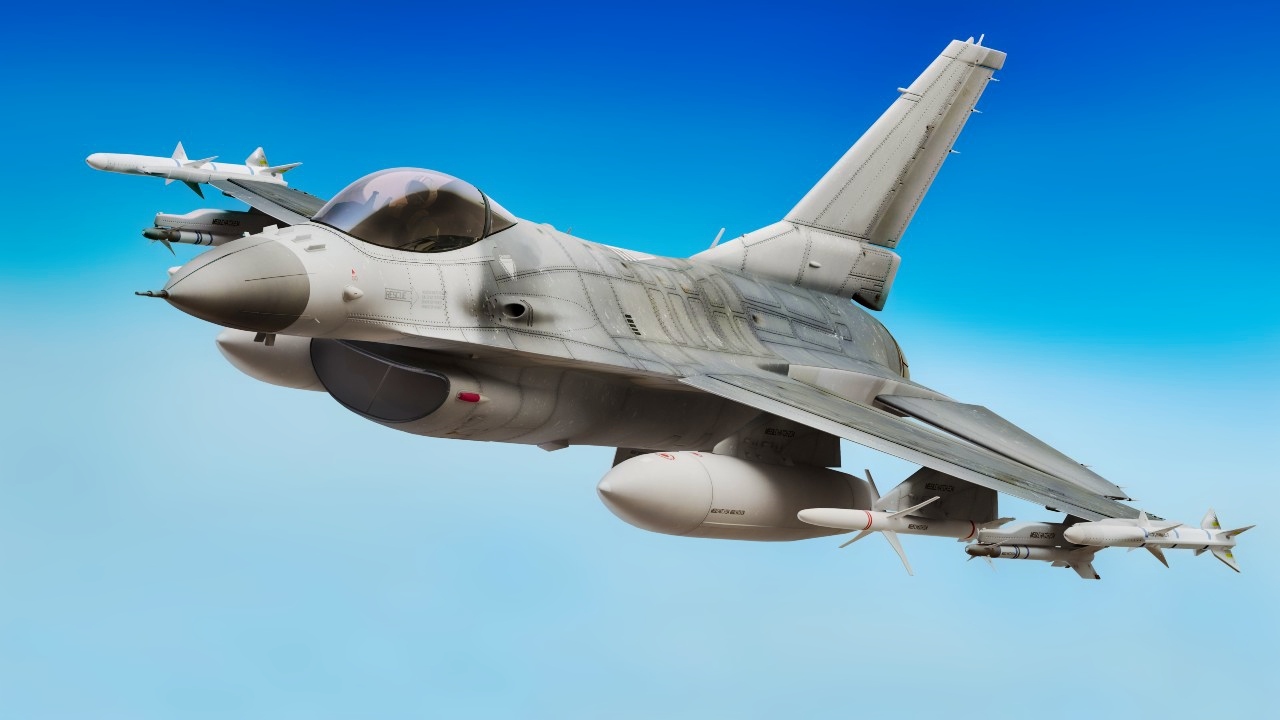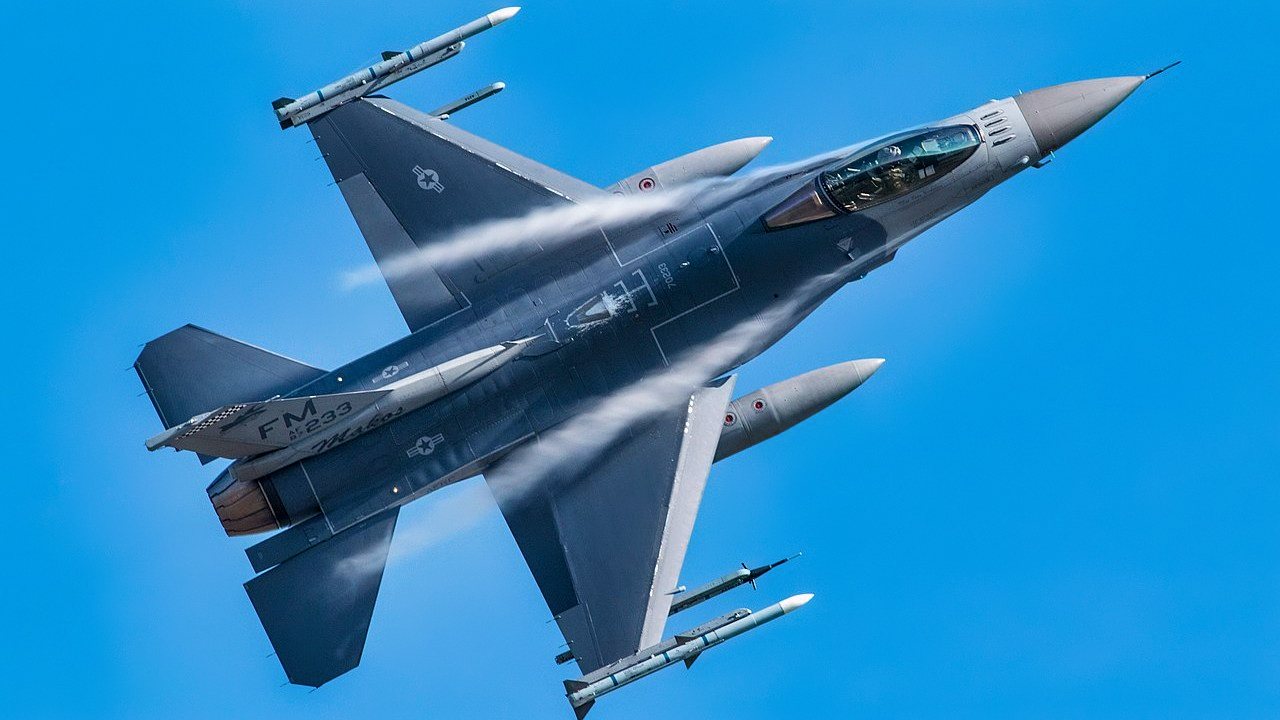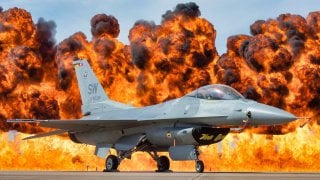Autonomous F-16 Fighters Are ‘Roughly Even’ With Human Pilots Said Air Force Chief
The future loyal wingmen of the United States Air Force are inching closer to becoming a reality, and more importantly, the artificial intelligence (AI) controlled aircraft could be on track to be as good as any human pilot. That was the assessment from Air Force Secretary Frank Kendall, who recently took flight in an autonomously-controlled X62A VISTA (Variable In-flight Simulation Test Aircraft), a modified F-16 Fighting Falcon
The future loyal wingmen of the United States Air Force are inching closer to becoming a reality, and more importantly, the artificial intelligence (AI) controlled aircraft could be on track to be as good as any human pilot. That was the assessment from Air Force Secretary Frank Kendall, who recently took flight in an autonomously-controlled X62A VISTA (Variable In-flight Simulation Test Aircraft), a modified F-16 Fighting Falcon.

The aircraft, which incorporates AI and machine learning from DARPA’s Air Combat Evolution (ACE) program, is expected to contribute greatly to the Air Force’s Next Generation Air Dominance (NGAD) program, which seeks to develop a “system of systems” including a manned sixth-generation fighter supported by autonomous platforms.
Kendall’s flight at Edwards Air Force Base (AFB), California, on May 2 came just weeks after the air service announced that an autonomously piloted F-16 Fighting Falcon had taken part in a series of simulated dogfights with a manned fighter. According to Kendall, during his time in the cockpit of the autonomous aircraft, the AI was able to maneuver the fighter and could simulate an “engagement” against a manned F-16, piloted by an aviator with 2,000 to 3,000 hours of experience.
Speaking at the Ash Carter Exchange conference in Washington, DC, the air secretary suggested, “It was roughly an even fight. But against a less experienced pilot, the AI, the automation would have performed better.”
As reported by Air & Space Forces magazine, pilots with 2,000-3,000 flight hours are considered “senior pilots,” one step below the top rating of “command pilot.”
Though Kendall made it clear that AI-controlled aircraft aren’t ready to be deployed, very good progress is being made, and he added, “It’s easy to see a situation where they’re going to be able to do this job, generally speaking, better than humans.”
Loyal Wingmen—But Loyal to Whom?
The Air Force’s Collaborative Combat Aircraft program is developing autonomous aircraft that are likely to be part of the larger NGAD effort. It would consist of the unmanned, loyal wingmen that would support a manned fighter.
The fighter pilot would still make the big decisions, such as developing an overall engagement strategy, selecting and prioritizing targets, and determining the best weapon to employ. Lower-level functions, such as the details of aircraft maneuver and engagement tactics could be left to the autonomous systems.
However, the fact that the U.S. military could have armed unmanned combat systems of any kind has led to concerns over the “killer robots” that could turn on their operators. No one wants to see a real-world version of The Terminator play out, a point Kendall addressed.
“There’s a lot of discussion in the community about the need to regulate AI, to regulate completely full autonomy,” Kendall further explained. “We already have rules that govern how people apply violence in warfare. They’re called the laws of armed conflict. But what I think we need to do is figure out how to apply them to these types of issues. At the end of the day, human beings are still responsible for creating, testing, and putting those machines out and using them. So we have to figure out how to hold those people accountable to ensure that we have compliance with the norms we all agree to.”

At the same time, the air secretary acknowledged that the United States can’t afford not to develop this technology, as near-peer adversaries including China and Russia are also looking at this technology.
“I think the future is becoming clearer,” Kendall continued. “I think the only question that really may remain is who’s going to get there first? And what are the constraints we want to place on ourselves that will limit our operational effectiveness compared to our adversaries and how we manage our way through that.”
Let’s just hope that those loyal wingmen will truly remain loyal.
Author Experience and Expertise: Peter Suciu
Peter Suciu is a Michigan-based writer. He has contributed to more than four dozen magazines, newspapers, and websites with over 3,200 published pieces over a twenty-year career in journalism. He regularly writes about military hardware, firearms history, cybersecurity, politics, and international affairs. Peter is also a Contributing Writer for Forbes and Clearance Jobs. You can follow him on Twitter: @PeterSuciu. You can email the author: [email protected].


